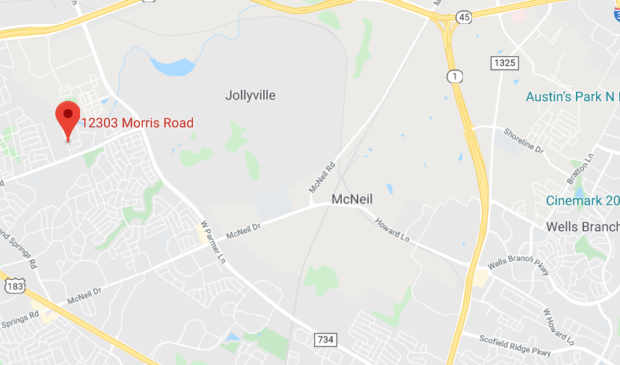Newsletter Signup
The Austin Monitor thanks its sponsors. Become one.
Most Popular Stories
- Austin’s growth is slowing, increasingly driven by international migration, as Hispanic and Black residents leave
- Firefighters to seek firing of Chief Baker
- Office slowdown sparks new downtown housing ambitions
- Elon Musk narrowly wins fight against neighbors over Austin-area home
- With cap of $687M, bond task force to weigh $4.4B in city needs
-
Discover News By District
Popular Whispers
Sorry. No data so far.

Northwest Austin property prompts questions about impervious cover and flooding
Tuesday, November 19, 2019 by Jessi Devenyns
There are times when a rezoning case awakens long-buried neighborhood arguments. Such was the case for the 1-acre tract at 12303 Morris Road, where co-owners and developers were requesting a zoning change from Rural Residence (RR) to a higher-density Townhouse and Condominium Residence (SF-6).
Thos Watts, who was representing the applicants on the case, told the Zoning and Platting Commission at its Nov. 5 meeting that “the zoning defines what we can do, and we need the reasonable max density” in order to generate enough profit from the tract to make development feasible.
The word “reasonable” raised questions among commissioners, staff and nearby residents.
Sherri Sirwaitis, who reviewed the case for Planning and Zoning, explained that the department recommended a lower-density Family Residence zoning (SF-3) consistent with the current surrounding land uses, and that the proposed Land Development Code designates the area for low-density detached suburban housing with ADUs or duplexes. Staff recommendation permits the applicant to develop the site with up to six duplexes or 12 residential units.
Although residents and staff agreed that the site was appropriate for development, Dan Sulzer, a neighbor, told commissioners that the letter of the code should be followed. “The codes are there to protect people and protect property,” he said. Changing the zoning to a higher-density spot zoning would not be in the best interests of the community and would contribute to existing problems, he insisted.
He passionately explained that the surrounding developments in the area were built by a “scoundrel” and have contributed to increased flooding and the degradation of the surrounding communities. Code enforcement, he said, is a nonexistent service in the area but is desperately needed to address derelict cars, over-parking and a “stolen” easement that a neighbor fenced off. “We need help. We need to enforce those things that are there and we need to improve,” he said. According to him, adding more residents and impervious cover with higher-density zoning would exacerbate these issues and put future residents in danger when faced with a flood or fire. The tract has limited exit routes as it backs up to a dead-end street.
“I’m old, I can say what I think,” he concluded.
Watts told commissioners that the unusual configuration of the trapezoidal-shaped tract has made it difficult to develop. Upzoning the parcel to allow for townhomes permits the development of 12 units but has the additional benefit of allowing one exit driveway, an important feature as the developers are working with limited street frontage. Lower-density SF-3 zoning for duplexes requires a 10-foot space between residences and individual driveways, which makes organizing them on the property a bit of a jigsaw puzzle, according to Watts. Furthermore, he said that “rental duplexes are frequently not good neighborhood neighbors.”
Amar Gulhane, one of the owners of the property, explained to commissioners that SF-6 allows for better planning and will make the residential enclave more appealing to the surrounding neighborhoods.
Despite hesitation from staff and neighbors, the commissioners were more amenable to the idea of higher zoning. “When you have houses that are connected, you have more flexibility than when they’re separated,” Commissioner Nadia Barrera-Ramirez said.
Commissioner Bruce Evans noted that constructing six duplexes on the lot seemed improbable. “Let’s give them the opportunity to do what they can do with this tract of land … and not get hung up with all the nuances here,” he said.
Other commissioners were torn. While they recognized the benefits associated with the smaller footprint from condos, they also wanted to respect and maintain the lower-density family residential zoning in the area.
To compromise and further reduce the possible impervious cover on the site, the commission voted 8-1 to recommend SF-6 zoning and cap the number of units at 11. Commissioner David King voted against the motion and Commissioner Jim Duncan was absent.
“My history and experience tell me that duplexes are more affordable than condos,” King said, elaborating on his dissenting vote. “I’m worried that the product we will get will be market rate.”
Watts replied that the intention behind the project is to produce middle-of-the-road housing. “We don’t want to be excessively expensive, (but) we don’t want it to turn into a slum,” he said.
Map courtesy of Google Maps.
The Austin Monitor’s work is made possible by donations from the community. Though our reporting covers donors from time to time, we are careful to keep business and editorial efforts separate while maintaining transparency. A complete list of donors is available here, and our code of ethics is explained here.
You're a community leader
And we’re honored you look to us for serious, in-depth news. You know a strong community needs local and dedicated watchdog reporting. We’re here for you and that won’t change. Now will you take the powerful next step and support our nonprofit news organization?


